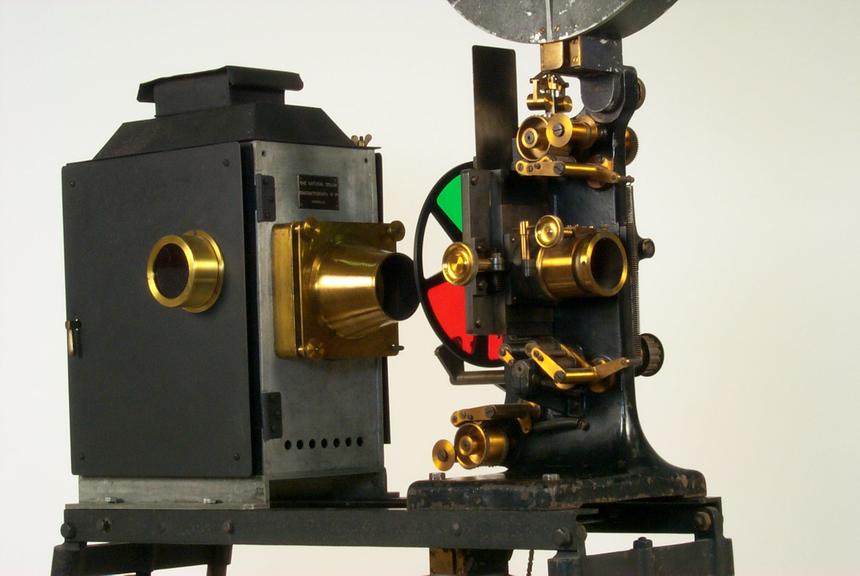February 26, 1909.
For the first time, the general public was shown a program in Kinemacolor. Twenty-one short films were shown at the Palace Theater in London and, for the first time, they were colorized.
Kinemacolor was the first successful color motion picture process. It was used from 1908 to 1914 and was invented by George Albert Smith. It was a two-color additive color process that photographed and projected a black-and-white film behind alternating red and green filters.

“Of the many attempts to produce cinematograph pictures… the greatest amount of attention so far has been attracted by a system invented by George Albert Smith, and commercially developed by Charles Urban under the name of “Kinemacolor.” In this system (to quote from Cassell’s Cyclopædia of Photography, edited by the editor of this present book), only two colour filters are used in taking the negatives and only two in projecting the positives. The camera resembles the ordinary cinematographic camera except that it runs at twice the speed, taking thirty-two images per second instead of sixteen, and it is fitted with a rotating colour filter in addition to the ordinary shutter. This filter is an aluminium skeleton wheel… having four segments, two open ones, G and H; one filled in with red-dyed gelatine, E F; and the fourth containing green-dyed gelatine, A B. The camera is so geared that exposures are made alternately through the red gelatine and the green gelatine. Panchromatic film is used, and the negative is printed from in the ordinary way, and it will be understood that there is no colour in the film itself.”[1]
Kinemacolor was most commercially successful between 1909 and 1918 and was shown at more than two-hundred-and-fifty venues. However, it was never a success, primarily due to the fact that it was so expensive to install the projectors in the cinemas.
[1] Anonymous, How to Make and Operate Moving Pictures (New York, New York: Funk & Wagnalls, 1917).

Leave a Reply